So, you’ve decided that your home needs a fence, now what? It can quickly become overwhelming with the amount of options to choose from, getting quotes, coordinating with neighbors, trying to adhere to HOA regulations, and more.
The truth is, the fence installation process for residential properties is quite simple once broken into steps. Hurricane Fence Co. is here to break those steps out for you. Celebrating our 30th year in service to Richmond and Tidewater, VA area homeowners, we have compiled this list with lessons learned over our tenure.
If you are looking for a residential fence installation at your property, have any questions, or just want to explore your options, please call Hurricane Fence Co. at 804-353-6030 (Richmond) or 757-853-5669 (Tidewater). Our fence professionals would be happy to assist or schedule a FREE quote.
Let’s get started with step one.
Contents
- 1 Understand Your Residential Fencing Needs
- 2 Local Regulations & HOA Bylaws
- 3 Choose Material & Style
- 4 Determine Property Lines & Desired Layout
- 5 Consider Gates & Access Points
- 6 Get Multiple Quotes
- 7 Prepare Your Property for Installation
- 8 The Residential Fence Installation Process & Timeline
- 9 Your Residential Fence Installation Is Complete!
Understand Your Residential Fencing Needs
Why are you interested in installing a fence? The answer to this question will drive and influence nearly every other step in the process, making it a perfect place to start your journey.
There are three main reasons why fencing remains one of the most popular home improvement projects, with Ruby Home showing residential fencing growing 43% year over year. Let’s examine them to find one that fits you and your property:
- Privacy
- Safety & Security
- Aesthetic Improvements & Increasing Curb Appeal
Don’t limit yourself to just one either. Depending on your taste, there are plenty of residential fencing options and styles out there that can check all three of these boxes. Although this may seem like a good time to explore fencing materials & styles, there is one ESSENTIAL step you must complete before making your decision.
Local Regulations & HOA Bylaws
Understanding your local building regulations & your HOA bylaws on residential fence installations is imperative in getting this process rolling with some momentum.
Local regulations are rarely overly strict, and their parameters often pose little issue to the average homeowner. Most restrictions that we have encountered (most often restricting the height of a fence) fall well within the industry standards. The only major exception to this is pool fencing, which entails meeting strict safety standards to acquire a building permit. Stay tuned for a pool fencing blog post this spring!
If you are looking at residential fencing regulations in the Richmond, VA area, check out our blog post on the subject. Otherwise, these regulations can be found on your locality’s website.
HOA bylaws, however, are where many homeowners run into frustration. We have done a detailed write up on fencing & HOAs before, but the most important thing for you to know about HOAs is that if a fence is installed that does not follow the bylaws to a tee, the association CAN and WILL require the fence be demolished (and therefore, replaced) at the expense of the homeowner.
HOAs have a reputation for being overly restrictive on color, material, layout, etc. but no two HOAs are the same. If you find that your written bylaws are too restrictive, we recommend attending a few meetings and voicing your concern to the board. You may find that the bylaws are outdated, or more flexible than you had imagined.
A good rule of thumb for your residential fence installation while belonging to an HOA is to submit your plans and quote (which we will talk about later) to your HOA for approval. That way, you have a papertrail with approval just in case your HOA finds issue with your fence when complete.
Once you feel comfortable in your understanding of these regulations, we can finally get down to deciding on material and style.
Choose Material & Style
As stated earlier in this post, your need for fencing will play a large role in finding your ideal material & style. If you find yourself struggling with your decision, feel free to ask your fence installer for their opinions during the estimating phase. They can help steer you in the right direction. To get a good idea on what options are available to you, here is a quick breakdown:
Wood Fencing
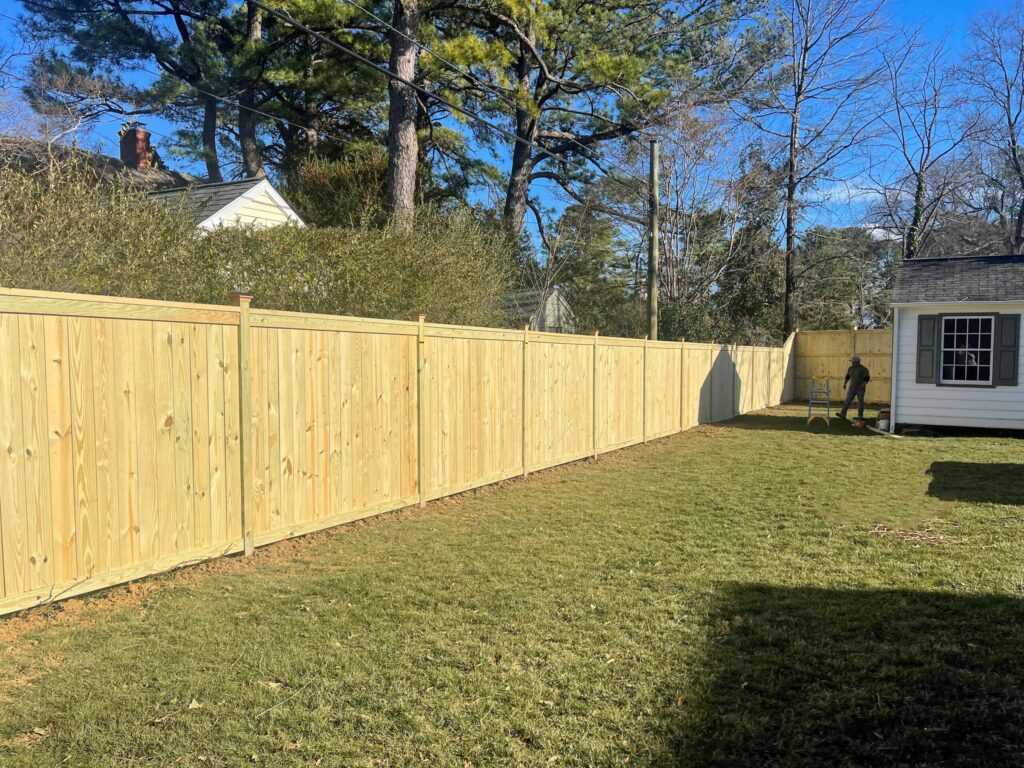
Wooden fences account for the largest chunk of residential fence installations, mainly due to its attractive price point and variety of possible styles. These styles include privacy, semi-privacy & shadowbox, as well as traditional styles such as picket, multi-rail, and crossbuck.
To properly handle the elements, wood fences should be stained (preferably with a UV-resistant stain) and restained every 2-3 years for the best results, according to Five Star Painting. Staining also presents a wide range of color options, so look out for the shade that fits your property best!
Chain Link Fencing
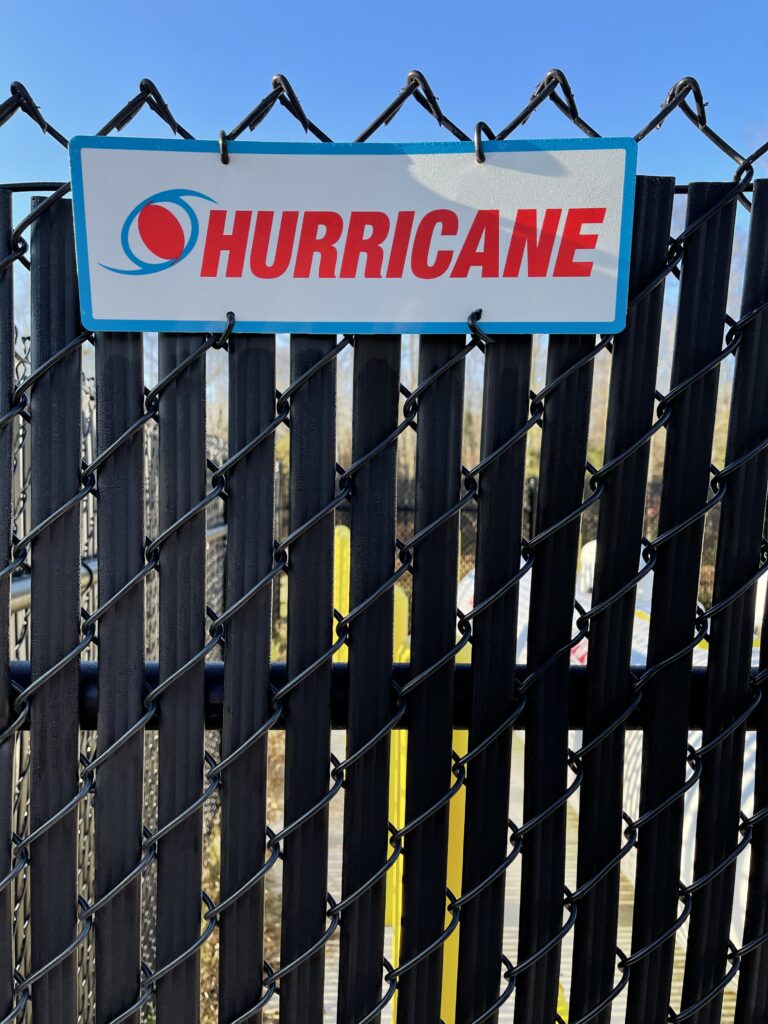
By far the cheapest residential fencing option, chain link has fallen in popularity within suburban communities over the past several years. With that being said, it remains a viable option for those interested, with benefits in safety, security, cost, and maintenance.
Apart from residential neighborhoods, chain link remains essential on larger, function-focused properties, such as farms, homesteads, and estates.
Vinyl Fencing
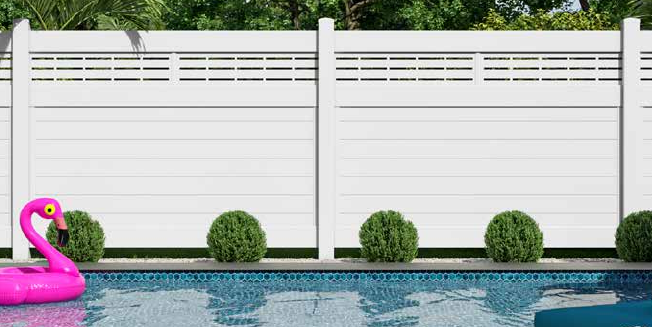
Over the past decade or so, vinyl styles have steadily grown in popularity with homeowners, and for good reason too. Typically seen in white, vinyl privacy fences provide homeowners with a low-maintenance option that is both cost-effective and visually appealing.
Although offered in split rail, cross buck, and picketed options, vinyl fencing steals the show in it’s privacy-focused iterations. Infill boards are connected between posts leaving no gaps in your fence line, cutting down on visibility and even blocking excess noise in some cases.
Aluminum Fencing
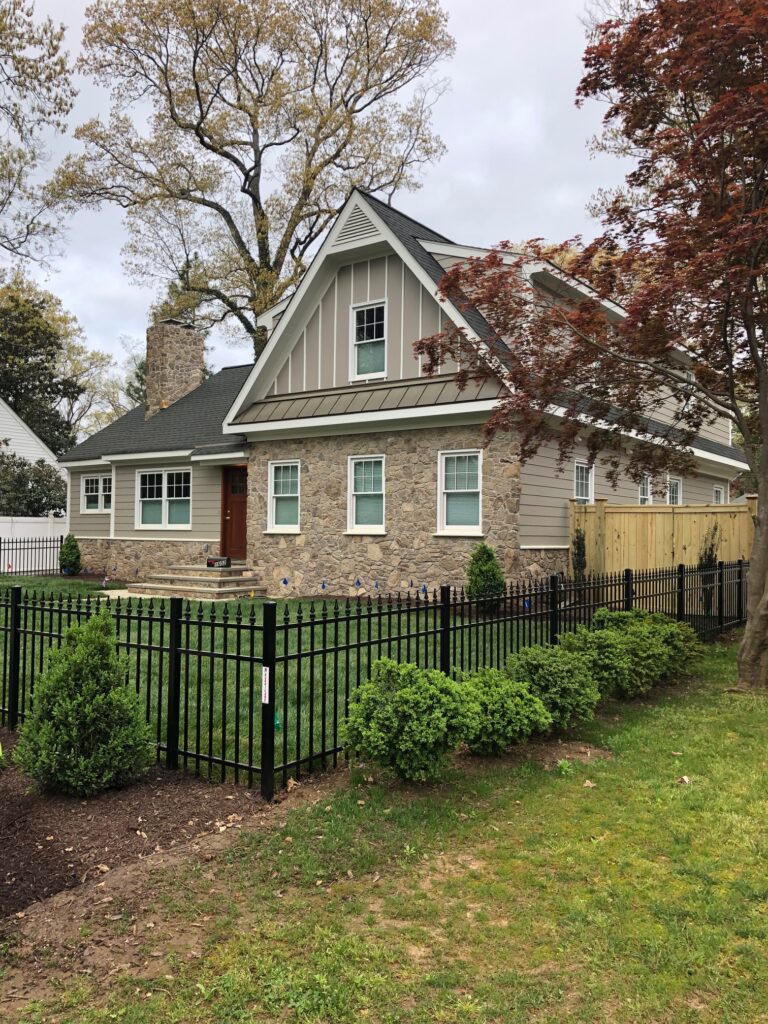
The modern cousin of the more traditional caste iron fences, aluminum fences (also referred to as ornamental) are aesthetically elegant and built to last. These fences are restrained to picket styles but are not short on options within this category. Its distinct look makes it a great fit for those looking to boost their curb appeal, and its durability makes it a perfect option for the safety and security conscious.
Composite Fencing
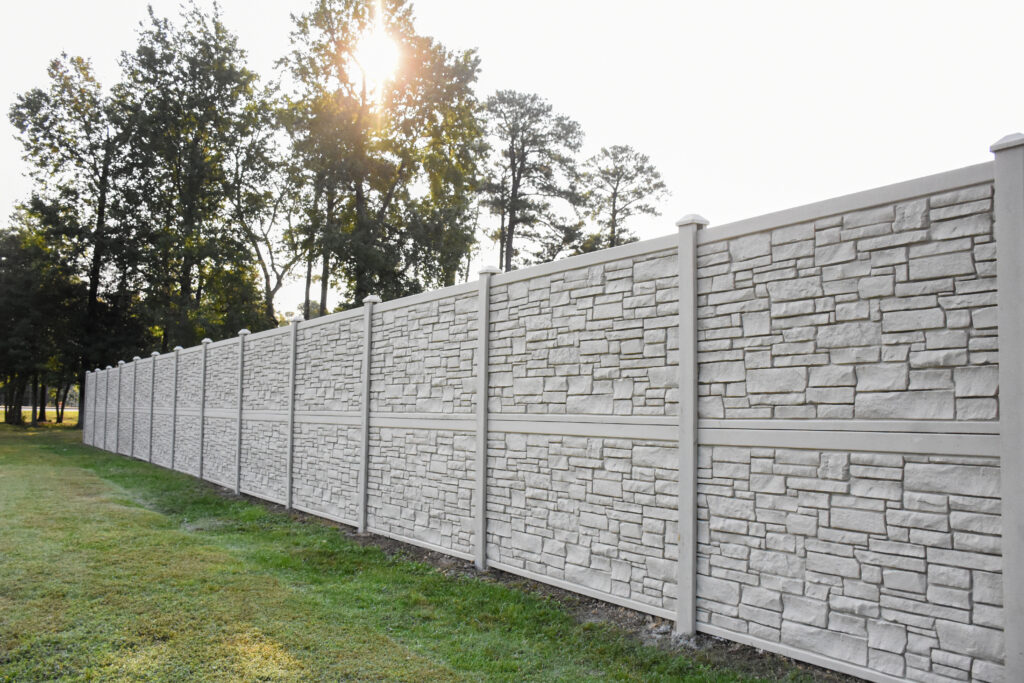
A newer player in the fencing game, composite fences really are the whole package. Made to resemble natural textures like wood or stone, these fences are made of a combination of recycled plastic and reclaimed wood fibers.
Checking all the boxes, composite fencing supplies privacy, safety, security, and visual appeal, all while being completely rot-resistant, and as easy to maintain as vinyl varieties. Of course, all these benefits come with a cost, as composite fencing is the most expensive of all the aforementioned materials.
Now that we have covered each of the major materials, let's move on to property lines and layout.
Determine Property Lines & Desired Layout
If you aren’t already aware of your exact property line, there are a few ways you can go about finding it. By defining your property line, you are less likely to run into issues or disputes later down the line.
- Check Your Deed: Your property deed will have a detailed description of your property line.
- Review the Property Survey: You may have received a survey report when you bought your home. This will have a map of your property and its borders. If you did not receive a property survey, you may be able to get a copy from your local registry of deeds.
- Consult Your Local Zoning Department: If you end up without any documentation on your property lines, try reaching out to your local zoning department. They may be able to provide you with your property survey, and if not, they will at the very least point you in the right direction to resolve this issue.
- Hire a Professional Surveyor: If all else fails, you will need to hire a professional surveyor to come and redo your property survey.
In most cases, we find that customers simply desire a perimeter fence surrounding their property or backyard. If you are looking for a specific layout, speak with your fence contractor to determine the best course of action.
Consider Gates & Access Points
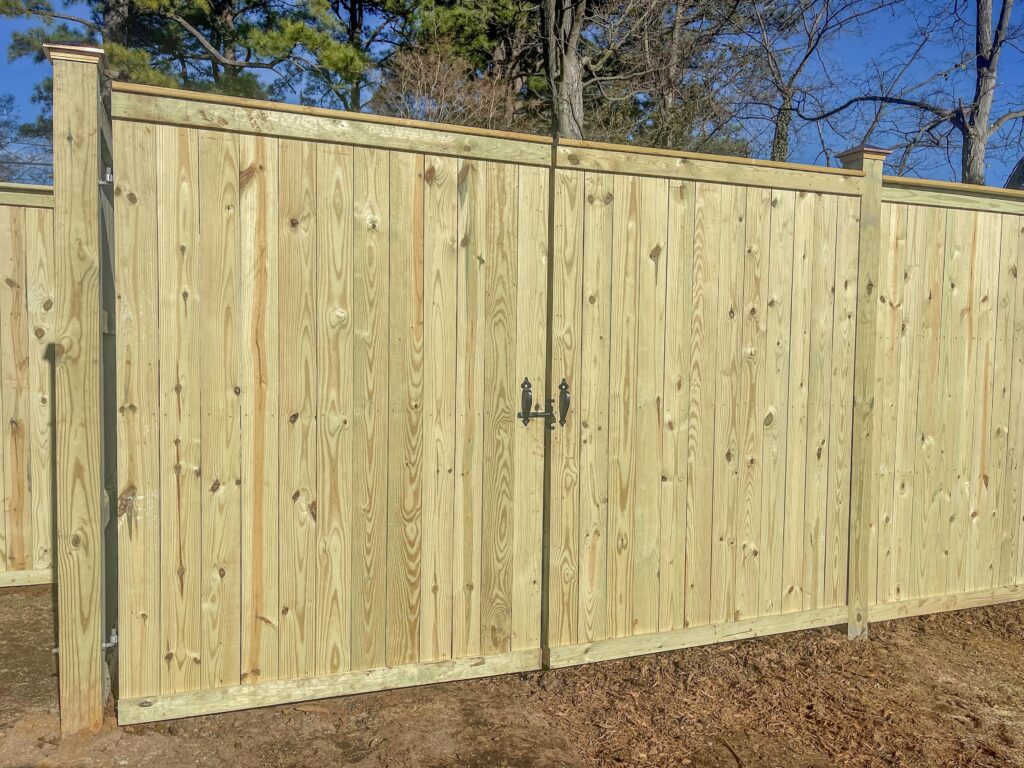
Take the time to determine how many points of access you would like on your fence, and make note of where you want them located. For residential purposes, there are a few gate types to consider:
- Walk Gates: These are your basic gates, meant for personal access.
- Drive Gates: Wider gates meant for vehicle entry.
- Swing & Decorative Gates: Typically reserved for personal access, but with a flare. These gates are hinged and latched and can be configured to swing wide to one side or from the middle, depending on your preference.
- Operator (Automatic) Gate Systems: Access at the push of a button. These gate systems can fall on the costly side, but the elegance of such systems are unmatched.
Get Multiple Quotes
Installing a fence at your home is a big and sometimes costly project. Because of this, it is important that you find a company that will handle your install with care and professionalism. The quoting/estimating process is the perfect time for you to vet prospective contractors, as well as comparing pricing, options, and schedule.
At the end of the day, choose the quote that you find to have the best value, all things included. Please view this blog post for more detailed information on choosing the right fence contractor.
If you would like to get started on your residential fencing installation with us here at Hurricane Fence Co., please call us at 804-353-6030 for our Richmond, VA office, 757-853-5669 for our Portsmouth/Tidewater office, or simply fill out a quote request form here and we will get back to you as soon as possible. Quotes are always complimentary.
Prepare Your Property for Installation
Preparing your property for your residential fence installation is a quick and easy process. Simply ensure your desired fence line is free of debris, clutter, or furniture to ensure the crew has ample space to conduct the installation.
Along with general preparations, one other step to be aware of is the marking of underground utilities. If you decide to work with us here at Hurricane Fence Co. for your residential fence installation, this is one step you can skip, as we take care of it for you!
Because the installation crew will need to dig on your property, underground utilities must be marked ahead of time to avoid loss of service and injury. You can request to have your property marked by contacting Miss Utility (VA811 for VA residents). This process takes some time upon request, and marking typically occurs within 48 hours of calling the ticket. Make sure to plan ahead to have these marked by the time your installation begins.
The Residential Fence Installation Process & Timeline
Unfortunately, there is no boilerplate answer to a definite installation process or timeline. Although most installations follow the same basic structure, each property is different and comes with its own set of challenges and possible setbacks but we find that most average installations take anywhere from 1-3 days once the crew has begun work onsite.
Of course, there are other factors to consider when establishing a timeline. Hurricane Fence, along with some other larger fence installers, tend to keep a rolling stock of the most popular materials and styles, cutting the overall timeline down significantly. However, there is no guarantee that your materials will be available at a moment's notice.
Depending on your chosen material, style, and gate choices, you may end up dealing with a longer “lead” time than you may have expected. Lead time refers to the amount of time it takes a company to acquire the materials needed for your job. During busy seasons, and depending on supplier demand, it may take a few weeks to get your material delivered and prepped for installation.
If scheduling is a prominent concern for you, make sure to inquire about lead time during the estimating process, that way you can compare the expected completion dates from each company you have quoting the project.
Your Residential Fence Installation Is Complete!
And Boom! Your beautiful new fence is finally installed! Enjoy peace and quiet, peace of mind, and your own little piece of paradise. Don’t forget that a fence requires maintenance (some more than others). Although you shouldn’t need to attend to it much in its first few months, if you opted for a wood fence, it is important to stain it quickly before the elements have a chance to cause any long-lasting damage.
For more information on everything fencing, check out the rest of our blog!
We hope these tips have helped you in your journey to a fenced in property. Whether you’re looking for a free quote, assistance, or have any questions, feel free to call or contact us anytime. Reach our Richmond Office at 804-353-6030, our Tidewater Office in Portsmouth, VA at 757-853-5669, or send us a request online!
Happy Fencing!


